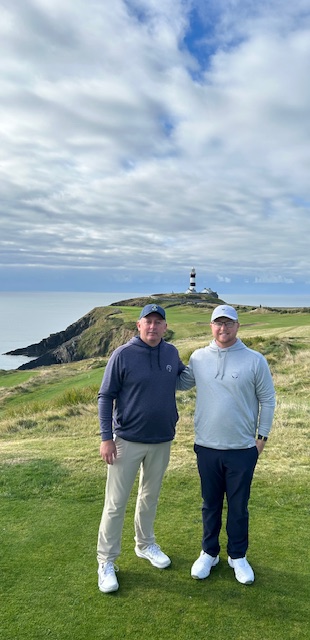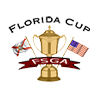Written by: Darin Green, Senior Director of Rules & Competitions
Each year the FSGA offers domestic and international group golf trips for our members to consider joining. In the past several years we held multiple trips at places like: Pebble Beach, Pinehurst, Whistling Straits, St. Andrews, SW Ireland, and Northern Ireland. For more information on these trips and the 2025 rotation please CLICK HERE.
On these trips, usually one or two FSGA staff members go along and I was fortunate to join Brian from our staff and go on our SW Ireland trip about a month ago. If you have ever played golf in Ireland or Scotland, you probably noticed a few differences over there. Below are a few things that are more common in SW Ireland that you do not see that often in the States.
Please note that the Rules of Golf are the same around the world and these are just a few differences on how they play golf and setup their courses.
Out of Bounds
Nearly all golf courses have out of bounds; however, on most of the coastal courses the coast line, including the beaches, sea, and rocks, are played as out of bounds. I assume the courses make them out of bounds for safety reasons and they probably do not own that land. It made me think of Pebble Beach where we have seen players climb down onto the beach to play a shot; cannot do that in Ireland.
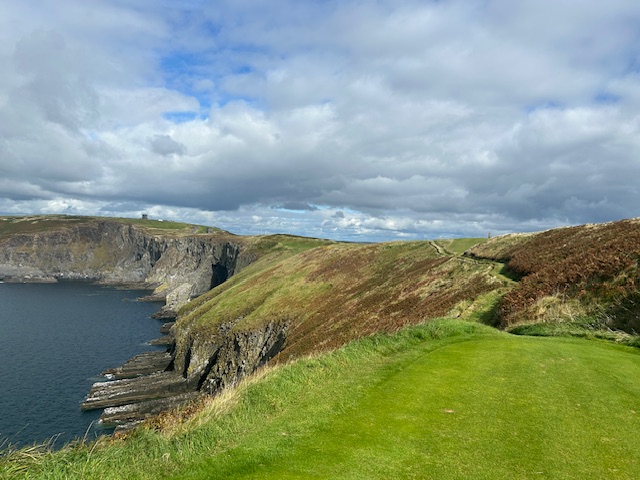 No Play Zones
No Play Zones
Old Head Golf Links in Kinsale, Ireland is the most visually stunning golf course I have ever seen. It is situated on a piece of land in the Atlantic Ocean and feels like an island. It is also sits over one hundred feet above the ocean with dramatic vertical cliffs. Before our round we were told that there is a red penalty area line painted around the perimeter of the course and to not cross the line, even if you see your ball or think you can play it. The cliffs are so high and steep that they made the penalty area a no play zone for golfers’ safety.
Foursomes Matches (Alternate Shot)
Most of the courses overseas have large trophy cases with lots of old trophies in their clubhouses. If you look closely at many of trophies, I noticed that there are a lot of trophies for Foursomes Competitions. Foursomes is a form of play where two players play alternate shot and either play a match against two others, or they play stroke play. This is a very fast form of play because while your partner is teeing off, you walk ahead on the side of the hole towards the fairway. As your partner is walking up the hole after teeing off, you go ahead and play the second shot and so on (basically leap-frogging each other until your reach the green).
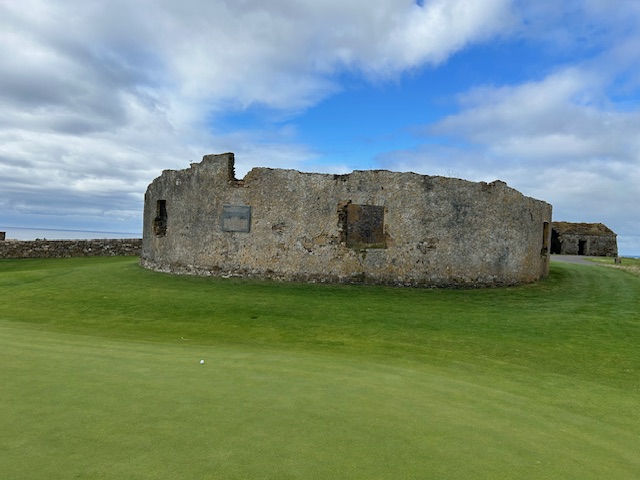 Castle Ruins
Castle Ruins
Several of the courses we played have castle ruins from the 13th-15th centuries and most clubs state that they are played as integral objects (no free relief). For instance, the third hole at Tralee is a spectacular par 3 on the coast line with a small castle ruin closely behind the green. If you happened to hit your ball next to it, you do not get free relief from it.
Next to the sixth green at Old Head there is an old structure that is just a few yards from the putting green (pictured right).
Cementary
Ballybunion has a unique starting hole where hit your first tee shot along, or over, the Killarney Cementary. If you miss your tee shot short and right your ball will likely end up in the cementary which is out of bounds.
Secondary Par 3
The third hole at Tralee has a secondary par 3 for times of the year when the sea occasionally gets angry and waves crash up near the green. For those times of the year, the club installs a fence right of the green, they close the hole, and golfers play another par 3 that is situated a little more inland away from the crashing waves.
Stacked Turf Faced Bunkers
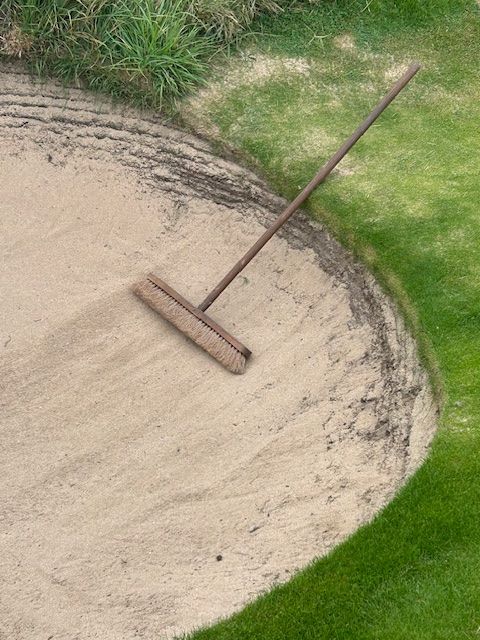 As you have probably seen when watching The Open on television, many of their bunkers are little pot bunkers with stacked turf faces creating a step wall around the edge of the bunker. They basically cut sod pieces and stack them on top of each other to create the wall around the bunker. Under the new 2019 Rules of Golf, those stacked turf faces are not part of the bunker so there is no penalty if your backswing makes contact with the face.
As you have probably seen when watching The Open on television, many of their bunkers are little pot bunkers with stacked turf faces creating a step wall around the edge of the bunker. They basically cut sod pieces and stack them on top of each other to create the wall around the bunker. Under the new 2019 Rules of Golf, those stacked turf faces are not part of the bunker so there is no penalty if your backswing makes contact with the face.
Bunker Rakes
Unfortunately, I found myself in many bunkers and noticed a few different type of rakes that I have never seen in the States. For instance, at Ballybunion, they use large brushes rather than rakes. Also, they like to place the rakes in the bunkers at most courses.
Tee Markers
Most courses in Ireland do not have fancy tee markers like you see at some courses here. Most courses simply use a medium-sized stone painted blue, white, green or red. There is an endless supply of stones over there!
Rain & Wind
We obviously encounter lots of rain in Florida, but since rain normally comes with lightning here we rarely play in it. In Ireland the weather can change very fast and you must be prepared for it. Never take your rain suit and rain gloves out of your bag!
When we played Tralee, it was windy and rainy, but we fought through it and enjoyed it. The caddies said the wind was gusting over 50 miles per hour! Balls were getting blown around on the putting greens sometimes. It was fun, but not something I wish for every round.
Blind Shots
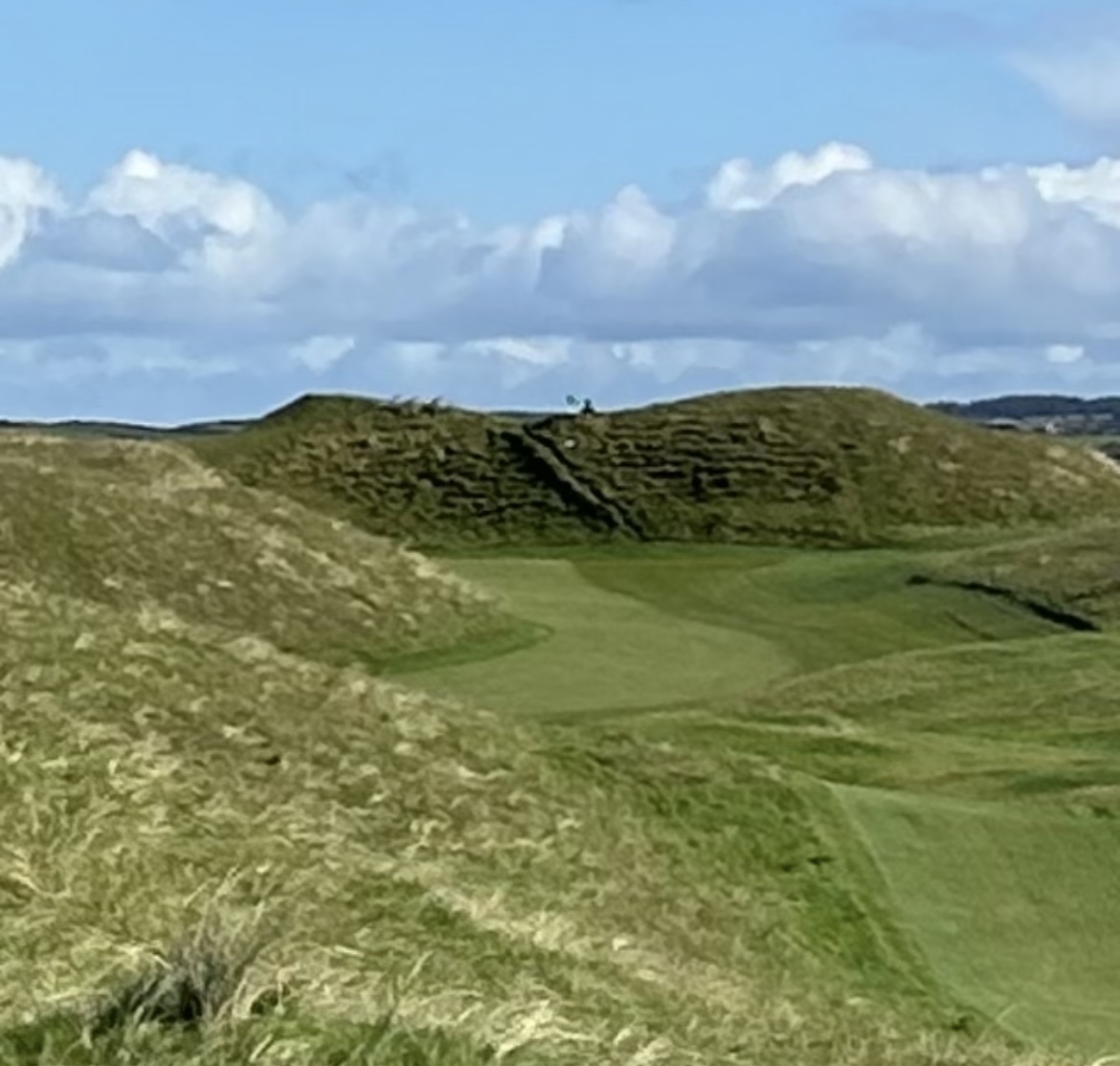 Many of the courses in Ireland have some blind tee shots and even blind approach shots. The fourth and fifth holes at Lahinch are the original Tom Morris designed holes and both have blind shots. The fourth is a par 5 (pictured right) and you must hit second shot over a big hill in the middle of the hole. They have a staff member that stands there all day and places a red flag on top of the hill if it is unsafe to play and green flag once the group ahead has moved on.
Many of the courses in Ireland have some blind tee shots and even blind approach shots. The fourth and fifth holes at Lahinch are the original Tom Morris designed holes and both have blind shots. The fourth is a par 5 (pictured right) and you must hit second shot over a big hill in the middle of the hole. They have a staff member that stands there all day and places a red flag on top of the hill if it is unsafe to play and green flag once the group ahead has moved on.
The fifth is a short par 3 and the entire putting green is blocked by another big hill. The club places a white stone on the hill to indicate the position of the flagstick and it creates an aiming point for you.
We hope to see you on one of the future FSGA Member Trips.
